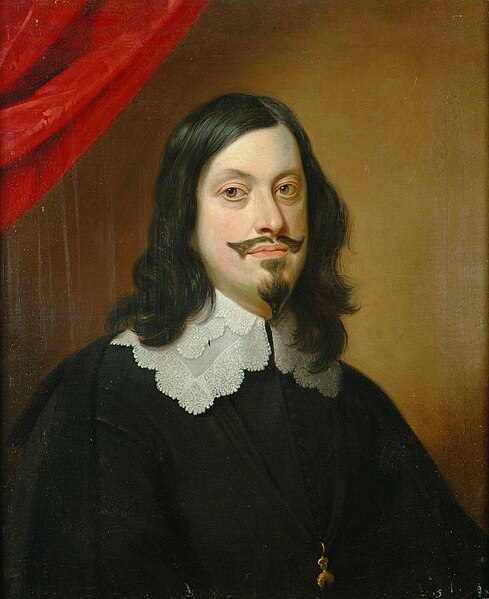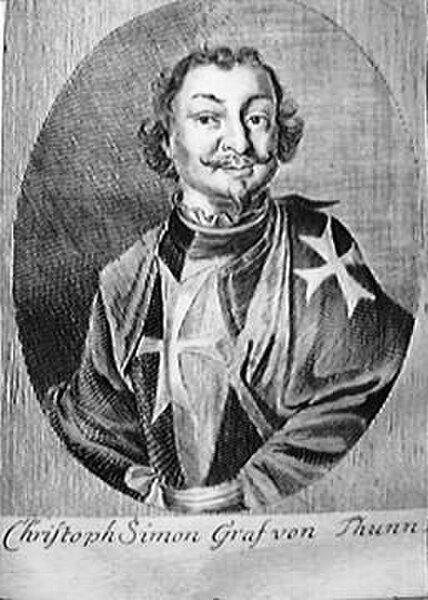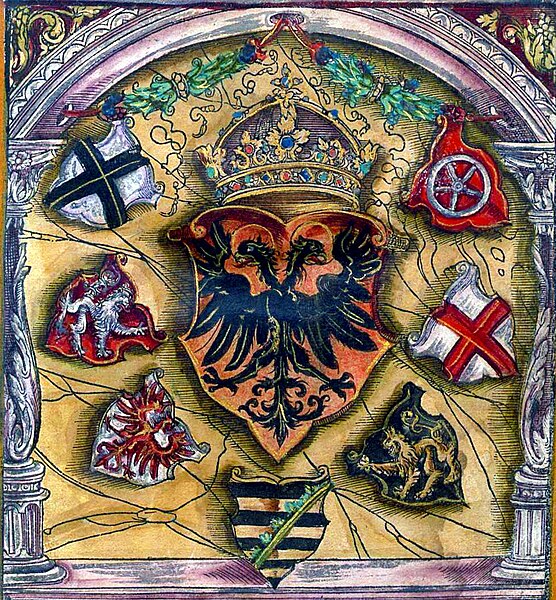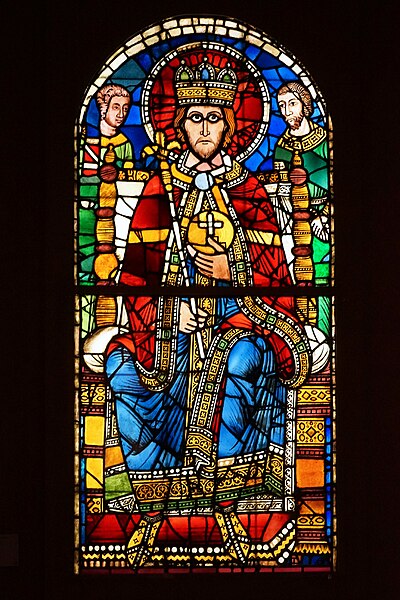Ferdinand III, Holy Roman Emperor
Ferdinand III was Archduke of Austria from 1621, King of Hungary from 1625, King of Croatia and of Bohemia from 1627 and Holy Roman Emperor from 1637 to his death.
Portrait by Jan van den Hoecke, 1643
Christoph Simon von Thun (1582-1635), teacher of young Ferdinand III
Portrait of Ferdinand's wife Maria Anna of Austria, by Diego Velázquez
Emperor Ferdinand III with the electoral princes, Copperplate engraving by Abraham Aubry, Nuremberg 1663/64
The Holy Roman Emperor, originally and officially the Emperor of the Romans during the Middle Ages, and also known as the Roman-German Emperor since the early modern period, was the ruler and head of state of the Holy Roman Empire. The title was held in conjunction with the title of king of Italy from the 8th to the 16th century, and, almost without interruption, with the title of king of Germany throughout the 12th to 18th centuries.
Longest reigning Frederick III 19 March 1452 – 19 August 1493
Coats of arms of prince electors surround the imperial coat of arms; from a 1545 armorial. Electors voted in an Imperial Diet for a new Holy Roman Emperor.
Depiction of Charlemagne in a 12th-century stained glass window, Strasbourg Cathedral, now at Musée de l'Œuvre Notre-Dame.
Illustration of the election of Henry VII (27 November 1308) showing (left to right) the Archbishop of Cologne, Archbishop of Mainz, Archbishop of Trier, Count Palatine of the Rhine, Duke of Saxony, Margrave of Brandenburg and King of Bohemia (Codex Balduini Trevirorum, c. 1340).








